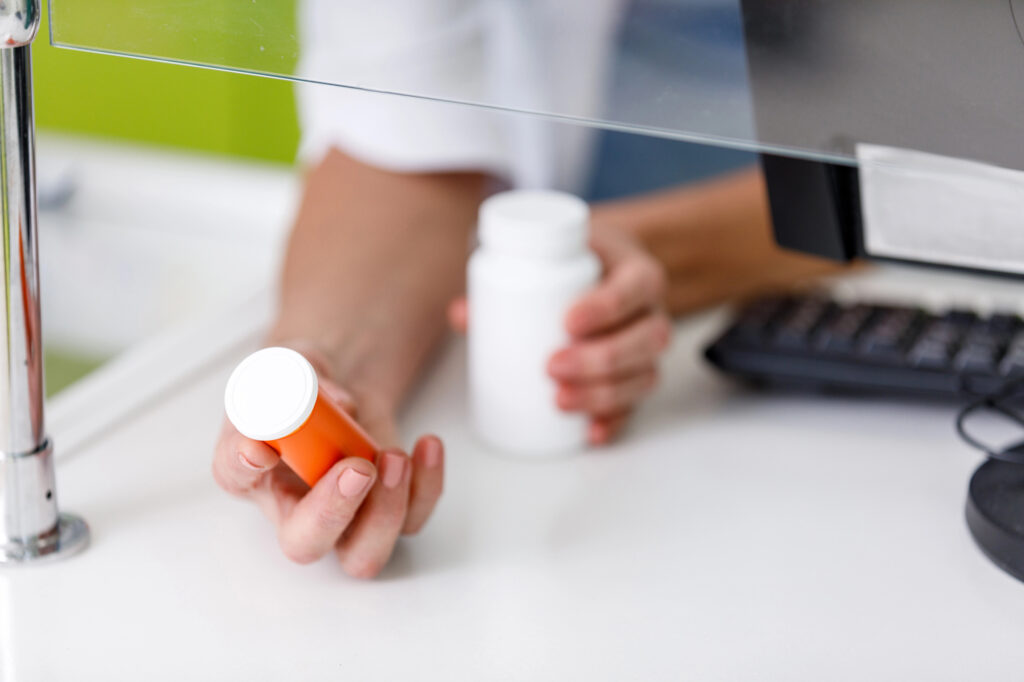Many of the most common health problems in the U.S., such as heart disease, diabetes, high blood pressure, and thyroid disorders require long-term management.
While adopting healthier habits—like eating well, staying active, and handling stress—can help, many people still rely on medications to keep these conditions in check and prevent complications. However, the reality is that medications can be costly, adding pressure to already challenging situations.
Prescription Assistance Programs (PAPs), also known as prescription cost savings programs, are initiatives designed to help reduce the financial burden of necessary medications by offering discounts or covering costs for those who qualify.
Find out ten medications you can access through PAPs and how these programs can make managing your health a little easier and more affordable.

What Are Prescription Assistance Programs (PAPs)?
Prescription Assistance Programs are designed to help people access essential medications at lower costs or even for free, depending on their financial circumstances. They are often funded by pharmaceutical companies, non-profits, or government initiatives.
To qualify, patients often need to meet specific criteria such as income limits, lack of insurance, or being underinsured.
PAPs aim to make healthcare more equitable by ensuring everyone has access to the medications they need for their well-being, regardless of their financial situation.
Ten Common Medications Available Through PAPs
1. Amlodipine
Amlodipine is a calcium channel blocker used to treat high blood pressure and chest pain by relaxing blood vessels and improving blood flow. By reducing the workload on the heart and lowering blood pressure, Amlodipine helps prevent strokes, heart attacks, and kidney problems.
For many patients, consistent use of Amlodipine is vital for maintaining cardiovascular health, but high costs can be a barrier. PAPs provide an opportunity to reduce these costs, making it more feasible for patients to adhere to their prescribed treatment plans.
2. Atorvastatin
Atorvastatin, a type of statin, is widely prescribed to lower cholesterol levels in the blood. It inhibits an enzyme involved in cholesterol production in the liver, thereby reducing the amount of cholesterol circulating in the bloodstream.
High cholesterol is a significant risk factor for cardiovascular diseases like heart attacks and strokes. By lowering cholesterol levels, Atorvastatin helps reduce such risks, making it an essential medication for those with high cholesterol or heart disease.
Accessing Atorvastatin through PAPs or discount cards can make this life-saving medication more affordable for those who need long-term therapy to maintain their cardiovascular health.
3. Gabapentin
Finally, Gabapentin is used to treat nerve pain resulting from conditions such as diabetes, shingles, or spinal cord injuries, and it also helps control seizures in epilepsy patients. It stabilizes electrical activity in the brain and affects the way the nerves send messages to the brain.
PAPs can alleviate the financial burden of this medication, ensuring those who need it can continue their treatment without financial stress.
4. Levothyroxine
Levothyroxine is a synthetic thyroid hormone used to treat hypothyroidism, a condition where the thyroid gland does not produce enough thyroid hormone. This hormone regulates the body’s metabolism, energy levels, and overall hormonal balance.
Levothyroxine supplements the deficient hormone, restoring normal metabolic activity and alleviating symptoms like fatigue, weight gain, and depression. Since hypothyroidism is typically a lifelong condition, patients often require daily medication for life.
PAPs can help make this hormone replacement therapy more affordable, allowing patients to maintain their quality of life and avoid severe complications such as heart problems and mental health issues.

5. Lisinopril
Lisinopril is an angiotensin-converting enzyme (ACE) inhibitor commonly prescribed to treat high blood pressure (hypertension) and heart failure. It relaxes blood vessels, which lowers blood pressure and makes it easier for the heart to pump blood.
Since Lisinopril manages high blood pressure, it prevents strokes, heart attacks, and kidney problems, particularly in patients with diabetes.
For many, Lisinopril is a cornerstone of their treatment plan, but without assistance, the cost can be prohibitive.
6. Losartan
Losartan, a type of angiotensin II receptor blocker (ARB), is commonly prescribed to help lower high blood pressure and safeguard kidney health in individuals with diabetes.
By relaxing blood vessels, Losartan improves blood flow, reducing blood pressure and minimizing the heart’s workload. In addition to its benefits for cardiovascular health, it protects the kidneys from damage caused by elevated blood sugar levels, which is a frequent concern for diabetic patients.
Through Prescription Assistance Programs, accessing Losartan becomes more affordable and patients can manage both hypertension and diabetes-related complications with greater ease.
7. Metformin
Metformin is often the first-line treatment for Type 2 diabetes. It helps control blood sugar levels by decreasing glucose production in the liver and improving insulin sensitivity, making the body’s natural insulin more effective.
Maintaining controlled blood sugar levels helps prevent serious complications of diabetes, such as:
- Nerve damage
- Kidney failure
- Heart disease
While Metformin is generally less expensive than some newer diabetes medications, it can still represent a significant cost for uninsured or underinsured patients. PAPs make it easier for these patients to access Metformin, supporting their ongoing diabetes management.
8. Metoprolol
Metoprolol is a beta-blocker used to treat high blood pressure, chest pain (angina), and heart failure. It blocks the action of certain natural chemicals, like adrenaline, on the heart and blood vessels. This effect helps lower heart rate, blood pressure, and strain on the heart.
For those with heart conditions, Metoprolol reduces the risk of future heart attacks and strokes and in improving survival rates after a heart attack. PAPs can help cover the cost of this medication, ensuring patients continue their treatment and protect their heart health.
9. Omeprazole
Omeprazole is a proton pump inhibitor (PPI) used to treat gastroesophageal reflux disease (GERD), stomach ulcers, and other acid-related conditions. It reduces the amount of acid produced in the stomach, alleviating symptoms such as heartburn and preventing damage to the esophagus and stomach lining.
Prescription Assistance Programs can help make this medication more affordable and help patients manage their symptoms effectively and prevent serious complications like esophageal cancer.
10. Ozempic (Semaglutide)
Ozempic is a glucagon-like peptide-1 (GLP-1) receptor agonist primarily used to manage type 2 diabetes. It works by mimicking a hormone that naturally regulates blood sugar levels, helping to lower blood glucose and improve the body’s response to insulin.
Ozempic also slows digestion, which can reduce appetite and promote weight loss, making it an effective treatment for some patients struggling with obesity.
Consistent use of Ozempic prevents complications related to diabetes, such as heart disease and nerve damage.
Due to its cost, many patients find it challenging to afford Ozempic, but PAPs can greatly reduce the out-of-pocket expenses, letting those who need it continue their treatment without interruption.

Access All the Medications You Need with Our Prescription Cost Savings Programs
For those spending more than $50 each month on a single medication, Health Access Now offers a way to access substantial discounts. We handle the application process for benefits available through non-profits and government programs.
Contact our team or visit our website to explore if your prescriptions qualify for assistance in your state. Should they be eligible, we’ll provide personalized support throughout the process.


